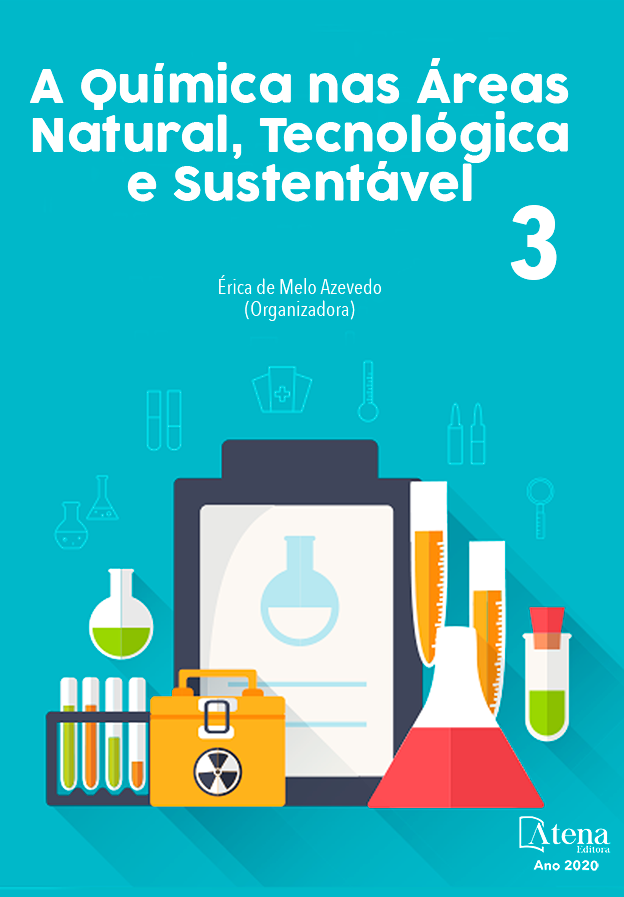
ESTUDO DO COMPORTAMENTO DA GOMA DE LINHAÇA EM MEIO AQUOSO POR ESPALHAMENTO DE LUZ DINÂMICO E REOLOGIA
Neste trabalho, o comportamento da goma de linhaça em meio aquoso foi acompanhado por medidas do raio hidrodinâmico (RH) do polímero, por espalhamento de luz dinâmico, e por medidas de viscosidade aparente (h), em reômetro rotacional. Foram levados em consideração os efeitos da filtração da solução, do pH e da salinidade do meio aquoso. Por espalhamento de luz dinâmico, detectou-se a presença de três diferentes populações de partículas poliméricas, atribuídas a moléculas isoladas e agregados poliméricos, que foram parcialmente removidos após filtração das soluções, evidenciando que a filtração pode remover a fração de polímeros que mais contribui para o aumento da viscosidade. As mudanças de pH (3 a 13) e de salinidade (NaCl 10-2 e 10-1 mol/L-1) resultaram em mudanças significativas no raio hidrodinâmico das moléculas poliméricas. Os valores máximos de RH e de h foram observados para pH 7-9, e os mínimos em pH 13, que foram atribuídos principalmente aos grupos ácidos (-COOH) presentes na estrutura polimérica, que são ionizados em pH alcalino, expandindo a cadeia polimérica, mas são blindados pelos cátions das bases em valores muito altos de pH, contraindo o novelo polimérico. A adição de NaCl reduziu sensivelmente o raio hidrodinâmico do polímero em meio aquoso.
ESTUDO DO COMPORTAMENTO DA GOMA DE LINHAÇA EM MEIO AQUOSO POR ESPALHAMENTO DE LUZ DINÂMICO E REOLOGIA
-
DOI: 10.22533/at.ed.84220170911
-
Palavras-chave: Goma de linhaça, pH, raio hidrodinâmico, DLS.
-
Keywords: Flaxseed gum, pH, hydrodynamic radius, DLS.
-
Abstract:
In this work, the behavior of the flaxseed gum in aqueous medium was followed by measurements of the polymer hydrodynamic radius (RH), by dynamic light scattering, and measurements of apparent viscosity (h), in a rotational rheometer. The effects of filtration, pH and salinity of the polymer solution were taken into account. By dynamic light scattering, it was detected the presence of three different populations of polymeric particles, attributed to isolated molecules and polymer aggregates, which were partially removed after solutions filtration, showing that the filtration can remove the polymer fractions that most contribute to the increase of viscosity. The changes in pH (3 to 13) and salinity (NaCl 10-2 and 10-1 mol/L-1) showed significant changes in the hydrodynamic radius of the polymer molecules. The maximum values of RH and h were observed at pH 7-9, and the minimum at pH 13, which were attributed to the acid groups (-COOH) present in the polymer structure, which are ionized in alkaline pH, expanding the polymer chains, but are shielded by base cations at very high pH values, contracting the polymer coils. The addition of NaCl significantly reduced the polymer hydrodynamic radius in aqueous medium.
-
Número de páginas: 12
- Laura Gabriela Gurgel de Carvalho
- Nívia do Nascimento Marques
- Mariana Alves Leite Dutra
- Marcos Antonio Villetti
- Rosangela de Carvalho Balaban


